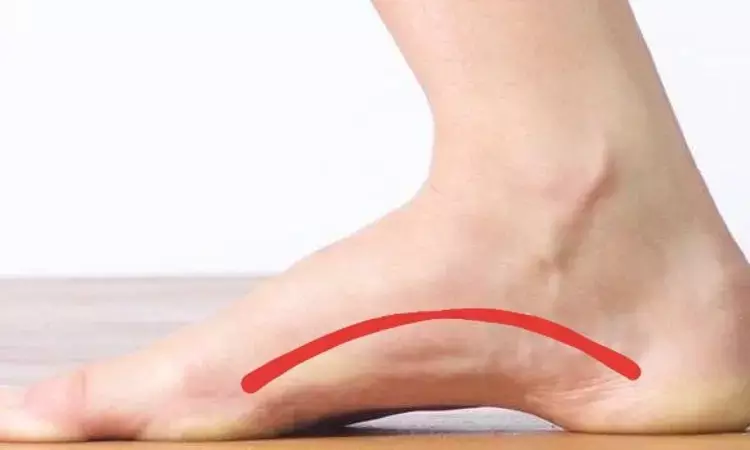- Home
- Medical news & Guidelines
- Anesthesiology
- Cardiology and CTVS
- Critical Care
- Dentistry
- Dermatology
- Diabetes and Endocrinology
- ENT
- Gastroenterology
- Medicine
- Nephrology
- Neurology
- Obstretics-Gynaecology
- Oncology
- Ophthalmology
- Orthopaedics
- Pediatrics-Neonatology
- Psychiatry
- Pulmonology
- Radiology
- Surgery
- Urology
- Laboratory Medicine
- Diet
- Nursing
- Paramedical
- Physiotherapy
- Health news
- Fact Check
- Bone Health Fact Check
- Brain Health Fact Check
- Cancer Related Fact Check
- Child Care Fact Check
- Dental and oral health fact check
- Diabetes and metabolic health fact check
- Diet and Nutrition Fact Check
- Eye and ENT Care Fact Check
- Fitness fact check
- Gut health fact check
- Heart health fact check
- Kidney health fact check
- Medical education fact check
- Men's health fact check
- Respiratory fact check
- Skin and hair care fact check
- Vaccine and Immunization fact check
- Women's health fact check
- AYUSH
- State News
- Andaman and Nicobar Islands
- Andhra Pradesh
- Arunachal Pradesh
- Assam
- Bihar
- Chandigarh
- Chattisgarh
- Dadra and Nagar Haveli
- Daman and Diu
- Delhi
- Goa
- Gujarat
- Haryana
- Himachal Pradesh
- Jammu & Kashmir
- Jharkhand
- Karnataka
- Kerala
- Ladakh
- Lakshadweep
- Madhya Pradesh
- Maharashtra
- Manipur
- Meghalaya
- Mizoram
- Nagaland
- Odisha
- Puducherry
- Punjab
- Rajasthan
- Sikkim
- Tamil Nadu
- Telangana
- Tripura
- Uttar Pradesh
- Uttrakhand
- West Bengal
- Medical Education
- Industry
Customized insoles biomechanically better than silicone insoles in treating adult flexible pes planovalgus

Flexible flat foot or pes planovalgus is a common foot deformity, and silicone and customized insole are commonly used as a non-operative treatment modality of flexible planovalgus.
Amit Kumar Vimal et al conducted a study to quantify and compare the radiological parameters immediately on weightbearing with silicon and customized insoles and without them to assess the effect on midfoot and hindfoot of the flexible planovalgus in adults.
A total number of 11 (8 females and 3 males) subjects with flexible pes planovalgus deformity without any other foot deformity were included in the study. Each patient was assessed three times in a random sequence without and with use of either silicon insoles or customized insole. The radiographic parameters without insole, with silicon insole, and with customized insole conditions were calculated using online available computer software Kinovea.
One-way ANOVA analysis was performed between groups (without insole, with silicone insole and with customized insole). The results of the study were:
The hindfoot parameters depicted that calcaneal inclination angle (CIA) was significant increased (P=0.000) and talar declination angle (TDA) was significantly decreased (P=0.003) only with the use of customized insole compared to without insole.
The midfoot parameters depicted that the first metatarsal angle (FMA) and talonavicular coverage angle (TCA) were significantly lower with customized insole (P=0.00) as compared to other two groups and significantly lower with silicone insole (P=0.00) as compared to without insole group.
This study implies that the rigidity of the insole is also a factor in the efect of foot orthosis for pes planus. The results indicate that the compressibility of the insole material affects the forefoot and hindfoot biomechanics differently. Flexible medial arch support (silicone insole) increases the first metatarsal height with enhanced talonavicular coverage area, which is likely to alter the normal 45% of the weight bearing forces which occur in forefoot and midfoot. The customized rigid insole increases the CIA and decreases the TDA providing additional improvement of the hindfoot biomechanics where normally 55% of bodyweight is distributed. There was a radiological improvement on immediate weight bearing with the use of customized insole compared to silicone insole, particularly in the hindfoot.
The authors concluded that "the medial arch of the foot is not equally maintained by silicone and customized insole, since silicone insole affects only the midfoot and customized insole affects both midfoot and more importantly the hindfoot which bears 55% of bodyweight."
Further reading:
The Effect of Customized and Silicon Insoles on Mid and Hindfoot in Adult Flexible Pes Planovalgus
Amit Kumar Vimal, Shivani Sharma et al
Indian Journal of Orthopaedics (2022) 56:1897–1905
https://doi.org/10.1007/s43465-022-00699-0
MBBS, Dip. Ortho, DNB ortho, MNAMS
Dr Supreeth D R (MBBS, Dip. Ortho, DNB ortho, MNAMS) is a practicing orthopedician with interest in medical research and publishing articles. He completed MBBS from mysore medical college, dip ortho from Trivandrum medical college and sec. DNB from Manipal Hospital, Bengaluru. He has expirence of 7years in the field of orthopedics. He has presented scientific papers & posters in various state, national and international conferences. His interest in writing articles lead the way to join medical dialogues. He can be contacted at editorial@medicaldialogues.in.
Dr Kamal Kant Kohli-MBBS, DTCD- a chest specialist with more than 30 years of practice and a flair for writing clinical articles, Dr Kamal Kant Kohli joined Medical Dialogues as a Chief Editor of Medical News. Besides writing articles, as an editor, he proofreads and verifies all the medical content published on Medical Dialogues including those coming from journals, studies,medical conferences,guidelines etc. Email: drkohli@medicaldialogues.in. Contact no. 011-43720751


